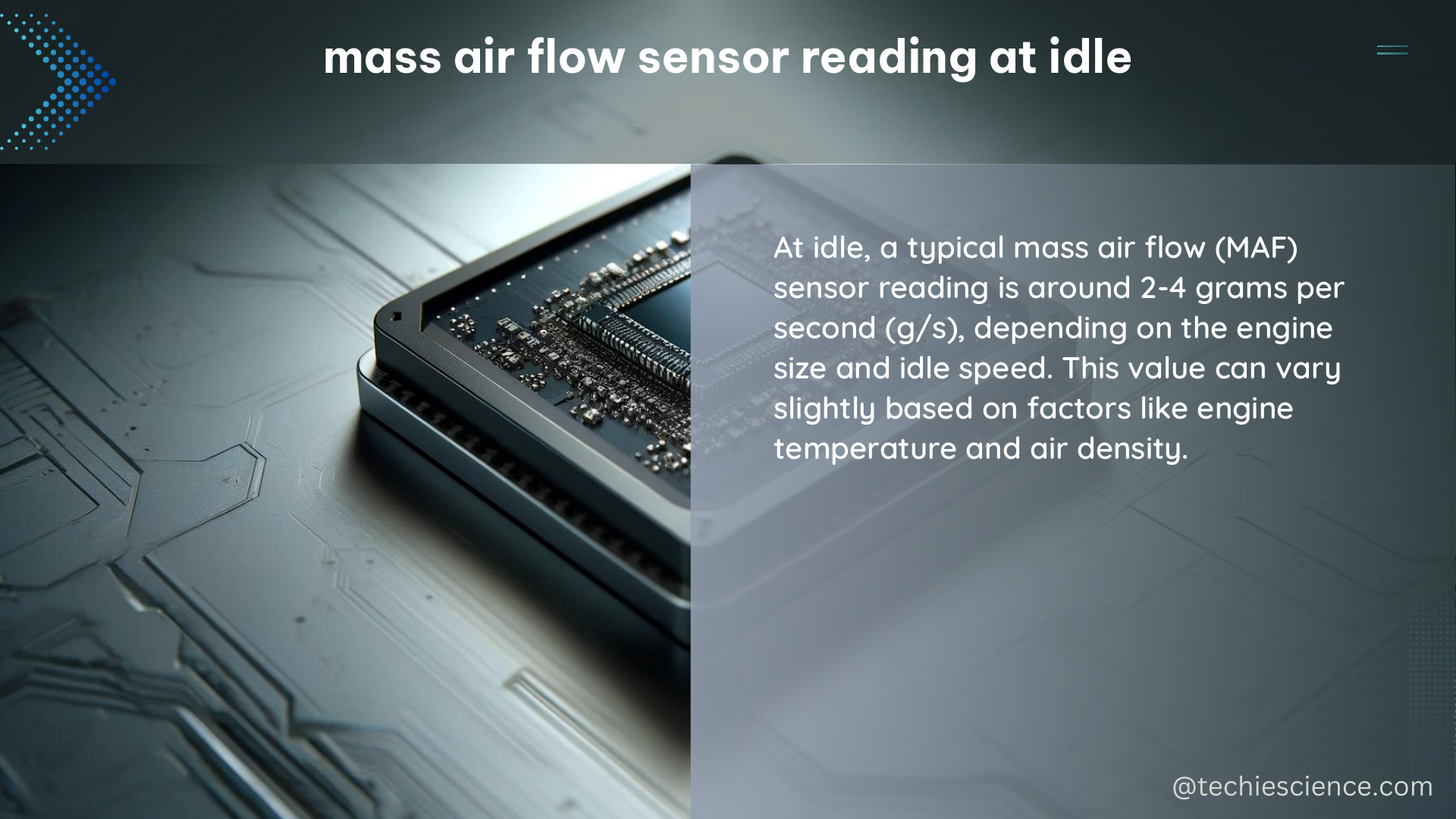The mass air flow (MAF) sensor is a crucial component in modern internal combustion engines, responsible for measuring the amount of air entering the engine. This information is vital for the engine control unit (ECU) to determine the correct air-fuel ratio, ensuring efficient and clean combustion. Understanding the MAF sensor readings at idle can provide valuable insights into the overall health and performance of your engine.
Understanding MAF Sensor Readings at Idle
At idle, the MAF sensor readings can vary significantly depending on various factors, such as engine size, temperature, and other operating conditions. Let’s explore the expected MAF sensor readings at idle for different engine configurations:
2002 BMW 330i with 3.3L Engine
For a 2002 BMW 330i with a 3.3L engine, the expected MAF reading at idle should be around 3.6 g/s. This value is based on the engine’s displacement and the typical air flow requirements at idle.
2.0 TFSI Engine
Other sources suggest that a healthy MAF reading at idle for a 2.0 TFSI engine can range from 15 to 25 g/s. This wider range is due to the engine’s forced induction system, which can affect the air flow at different operating conditions.
6.0L Powerstroke Diesel Engine
For a 6.0L Powerstroke diesel engine equipped with a MAF sensor, the average reading at idle should be:
– 21 g/s with a functioning EGR (Exhaust Gas Recirculation) system
– 32 g/s with a disabled or non-functioning EGR system
The EGR system plays a crucial role in regulating the air flow and can significantly impact the MAF sensor readings at idle.
Factors Affecting MAF Sensor Readings at Idle

It’s important to note that MAF sensor readings can be influenced by various factors, including:
- Engine Load: Increased engine load, such as running accessories like air conditioning or headlights, can cause the MAF sensor to read higher values.
- Engine Temperature: The temperature of the engine can affect the air density and, consequently, the MAF sensor readings.
- Sensor Condition: A malfunctioning or dirty MAF sensor can provide inaccurate readings, leading to potential engine performance issues.
- Exhaust Gas Recirculation (EGR): The EGR system’s operation can significantly impact the air flow and, therefore, the MAF sensor readings, as seen in the 6.0L Powerstroke diesel engine example.
Measuring MAF Sensor Readings at Idle
To accurately measure the MAF sensor readings, a live data scanner is required. Simply measuring the voltage across the MAF sensor with a digital multimeter (DMM) is not sufficient, as it does not provide the actual mass air flow rate in grams per second or the equivalent in English units.
A live data scanner, such as one paired with the Torque Pro app, can provide the necessary information to diagnose and troubleshoot any issues related to the MAF sensor. These scanners can display the real-time MAF sensor readings, allowing you to compare them to the expected values for your specific engine configuration.
Conclusion
The mass air flow (MAF) sensor plays a crucial role in the proper operation of your engine, and understanding the expected readings at idle is essential for maintaining optimal engine performance. By familiarizing yourself with the typical MAF sensor readings for different engine configurations and being aware of the factors that can influence these readings, you can effectively diagnose and address any issues related to the MAF sensor.
Remember, always use a live data scanner to accurately measure the MAF sensor readings, as this will provide the most reliable and detailed information for your specific vehicle.
References:
- Contradicting Info About MAF Readings at Idle
- MAF Sensor Reading
- MAF Sensor Reading
- MAF Sensor Reading
- MAF Readings Idle

The lambdageeks.com Core SME Team is a group of experienced subject matter experts from diverse scientific and technical fields including Physics, Chemistry, Technology,Electronics & Electrical Engineering, Automotive, Mechanical Engineering. Our team collaborates to create high-quality, well-researched articles on a wide range of science and technology topics for the lambdageeks.com website.
All Our Senior SME are having more than 7 Years of experience in the respective fields . They are either Working Industry Professionals or assocaited With different Universities. Refer Our Authors Page to get to know About our Core SMEs.